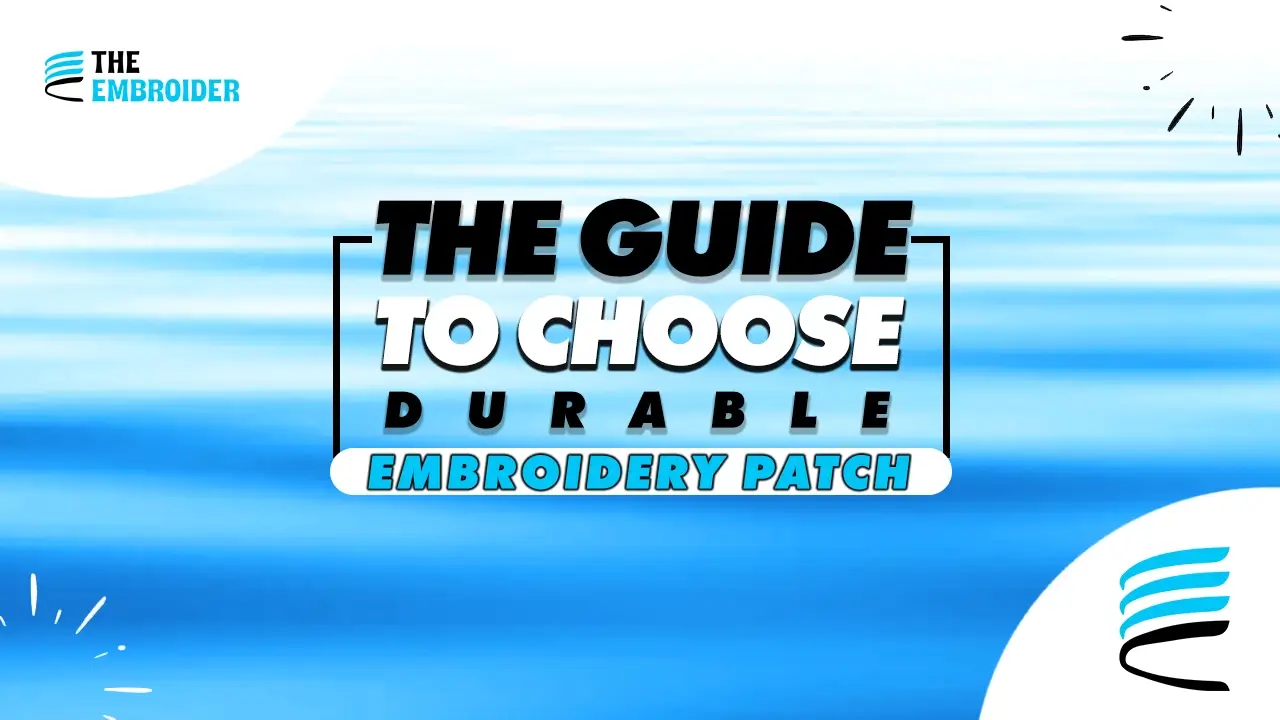If you want patches that don’t wear out fast, it’s all about picking the right material, type, and backing and knowing how to care for them. This guide breaks down what matters so your patches last.
The Guide: How to Choose Durable Embroidery Patches
Durability isn’t just a buzzword, it means your patches survive washes, wear, sun, and still look good. I’ve seen many great patches ruined by small mistakes in style, fabric, or care. So here’s what you need to know to pick durable patches that are built to last.
Types of Patches & What I’ve Seen in Real Life
These are patch styles I’ve worked with or inspected closely. Some hold up beautifully, others… less so depending on how they’re made and used.
Embroidered Patches
Classic stitched threads over a fabric base (usually polyester twill). Thick thread, raised texture.
- Why durable: Twill provides a solid base; dense stitching gives structure.
- Where they struggle: Very fine text or tiny details may blur over time. Also, in heavy wash or friction areas, thick edges can rub or fray.
- Best use: Jackets, backpacks, coats, places where you want texture and don’t mind some raised bulk.
Woven Patches
Made by weaving thin threads tightly into fabric. Flat, sleek, lots of detail.
- Why they work: Because woven patches are thinner and more flexible, they preserve delicate designs better. World Emblem says woven patches are “thinner and more flexible” than embroidery, helping sharp lines and detail.
- Where they have limits: They won’t offer that raised look. In heavy wear or rough surfaces, flat surfaces can take more scraping.
- Best use: Logos with small text, fine artwork, or items that need clean detail (caps, shirts, thinner fabrics).
PVC / Rubber Patches
Very durable, almost rubber-like. Water doesn’t faze them much; they resist peeling, fraying, etc.
- Strengths: Outdoors, rain, rough usage they survive.
- Weaknesses: They’re stiffer, heavier; might feel bulky on softer garments.
Leather Patches (Real & Faux)
Real leather patches age nicely, scuffs and weather give character. Faux leather looks good but often peels or loses its finish sooner under frequent wash.
Appliqué Patches
These combine fabric layers sewn on top of a base fabric. Good decorative effect + texture.
- Tip: On a strong base (canvas, denim) they last better. Edge stitching or reinforcement matters a lot here.
What Makes a Patch Truly Durable
From inspecting dozens of patches, talking with patch makers, and seeing what fails and what survives, here are the things that actually matter:
- Material base: Polyester twill, denim, canvas strong, stable fabrics resist wear. Weak ones (cheap felt, loosely woven cloth) degrade faster.
- Thread & stitching quality: Thick threads survive better under stress. Also stitch density (how close together stitches are) helps with wear.
- Backing & border finish: Sew-on edges, strong backing, well-finished borders (overlock or ‘merrowed’ edging) prevent lifting and fraying.
- Design simplicity vs detail: If your design is very detailed, woven style helps. For bold shapes, raised embroidery adds visual punch.
- How & where it’s used: A patch on a backpack or jeans gets more abuse than one on a jacket you rarely wash. That changes what kind of patch you should pick.
In practice, I once handled two patches for the same design: one embroidered, one woven. The embroidered version looked bold and stood out but after a few rough washes, its edges softened. The woven patch kept sharper lines, though it lacked the same texture. That taught me there often is a trade-off: you pick what matters most for your project.
Care & Maintenance Tips That Make a Difference
Because even top quality won’t help if you treat patches harshly:
- Wash inside out on cold/gentle cycles. Avoid hot water, rough scrubbing, and strong detergents.
- Air-dry when possible. High heat (in dryers) can shrink bases or weaken adhesives.
- Reinforce edges early if you notice fraying. A few stitches will extend life.
- For outdoor or high-abrasion items, choose patches with strong backing + sealed or overlocked borders.
- Keep patches out of direct harsh sun when possible, the UV does fade colors. Polyester threads hold up better under UV than some others.
Conclusion
Choosing durable embroidery patches isn’t guessing it’s about knowing what materials, styles, and care go into making patches that last. Remember:
- If texture, volume, and impact matter, go embroidered.
- If detail, clarity, and sleek finish matter, woven might be better.
- Always match backing + border finish to how the patch will be used.
- Care (washing gently, avoiding extreme heat, reinforcing edges) often makes more difference than small cost savings.
FAQ
Q: How long will a durable patch last?
A: With good materials, solid backing, and decent care, many patches last many years often outliving the garment they’re on.
Q: Is sewn always better than iron-on?
For staying power, yes. Sewing provides a stronger hold especially with frequent use and washing. Iron-on’s fine for low-stress usage, but it loses grip over time.
Q: What’s the best patch type for outdoor gear or work items?
PVC or heavy embroidered patches with strong sew-on backing and reinforced edges tend to hold up best.
Q: Can one patch mix styles (like embroidered + woven)?
Definitely. Using embroidery for borders or bold shapes + woven sections for fine detail often gives the best of both worlds.

